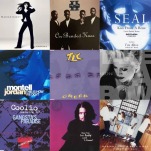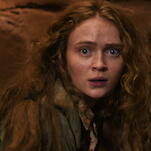Does the beloved Choose Your Own Adventure series still thrill?
The year is 1980. You are 8 years old, a student at Meadow Park Elementary in Port Charlotte, Florida. One day your teacher leads you and your class to the school library. There, a wondrous site awaits you: tables and tables and tables of books. These aren’t dog-eared, old library books with grubby plastic jackets designed to repel fingerprints and puke. They’re new: clean covers, sharp corners, crisp pages. You’ve always loved books. They remind you of your grandmother. Of quiet times. Of summer afternoons spent indoors, lost in the worlds of Ray Bradbury or Piers Anthony, while your annoying little brother and all the other noisy, pushy kids in the neighborhood are outside trying to out-stupid each other.
In the school library, you approach the nearest table of books. The $10 bill your mom gave you that morning is clutched in your hand like a sacred offering. Gingerly, you begin leafing through the neat, bright stacks of Judy Blume and Roald Dahl. You like their books, but you’ve already read them all. Glancing around, you begin to lose hope.
Suddenly something catches your eye. A slim book, but one with a mesmerizing cover. On it, a helmeted knight with glowing red eyes and a wicked-looking beard holds a sword with a horned skull on its hilt. Behind him lurk a castle, a dinosaur, some ancient Asian warrior, and what appears to be a warty, fanged Loch Ness Monster. What enthralls you most, though, is the image of a boy—about your age—riding a horse through this fantastic landscape. The book’s title, The Cave Of Time, pulls at your imagination like gravity. Above that evocative title is a bold claim, one that seals the deal as far as you’re concerned: “YOU’RE THE STAR OF THE STORY! CHOOSE FROM 40 POSSIBLE ENDINGS!”
When you’re a kid, choice is a big deal. You don’t get much of it. When I was that bookish, 8-year-old boy in Port Charlotte, being able to pick a breakfast cereal at the grocery store or a TV show at night felt exhilarating. And that’s just Apple Jacks and The Dukes Of Hazzard. Imagine being able to choose something bigger. Like, say, your own adventure.
The Cave Of Time is the first volume of the Choose Your Own Adventure series, the line of interactive gamebooks created by author Edward Packard, who penned The Cave Of Time along with many other installments of CYOA’s original 185-book run. Yes, I typed that correctly: 185. In 1980, when I purchased that copy of The Cave Of Time at the Scholastic Book Fair at Meadow Park Elementary, only eight CYOA books had been published. Already, they were becoming a sensation. It was a stroke of genius to sell them through the Book Fair, one of the few kid-aimed marketing campaigns that’s hard to criticize, seeing as it helps raise funds for schools and gets children reading.
I didn’t need any motivation to read when I was 8. But CYOA filled a void in my budding literary life that I didn’t know I had: agency. I never would have articulated it this way back then, but I’m sure I knew—at least unconsciously—that as I read all these books, I somehow imagined myself as Charlie Bucket or one of the Hardy Boys or the nerdy Bob Andrews from Robert Arthur’s The Three Investigators series. CYOA ramped things up a conceptual notch. Instead of merely identifying with a character, I was the character.
Or rather, you were the character. Packard’s use of “you”—of the second-person narrative mode—was a canny move. By referring to the reader directly, CYOA doesn’t just reach up from the pages; it pulls the reader in, fulfilling the promise of its “You’re the star!” tagline. As a kid, I loved that second-person perspective. As an adult, I can’t stand it. In a way, I’ve been scarred by CYOA. Whenever I try reading a work of grown-up fiction that’s written in second person—which, thankfully, is a rarity—all I can think is, “This reads like a goddamn Choose Your Own Adventure book.”
Which made it all the more difficult to get through The Cave Of Time when I recently re-read it. It’s been 30 years since I’ve read a CYOA book, but the basics came back to me quickly enough. Granted, there’s the caveat lector printed on the first page, one that I can almost recite entirely from memory:
WARNING!!!!








































